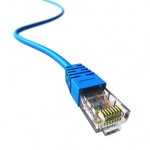IP Clocks in Hospitals
In the medical field, maintaining up-to-date, advanced technology is of high priority. Staying relevant with the technological shifts of the industry keeps medical facilities on a track of improvement, where upgrading the inner-workings of the institution enhances its overall performance. One way to access this track of improvement is through a facility’s clock system. Given the great reliance on accurate time in medical facilities, the installation of a synchronized IP clock system is a definitive solution to improving and expanding medical operations.
So how does the IP clock system improve medical facilities? One way is by providing the most accurate time possible. IP systems receive their time from an NTP server; a time protocol known for being accurate to the millisecond. Having this kind of reliability in the time display helps improve the overall efficiency of the medical facility.
Medical facilities can also improve the maintenance of the institution’s clocks with the installation of an IP system. With this system, the mundane task of adjusting each individual clock in the event of a time change is no longer existent. The IP system has the ability to automatically adjust all the clocks in the system during Daylight Saving Time, eliminating the need for all clocks to be manually changed by the faculty and saving time.
An IP clock system can also improve a medical facility on a monetary level with its cost-effective attributes. It is cost-effective in two ways: their lack of wiring and their ability to run independent of a master clock. Upon installation, IP clocks are connected utilizing the PoE Protocol (Power Over Ethernet), in which clocks receive their power and their data through the same Ethernet cord. This feature allows IP clocks to run on one wire compared to the standard three wired systems. The system is also capable of running without a master clock. Because each clock individually receives its time through the network from an NTP server, the system does not require a master clock for synchronization, eliminating the cost of purchasing one.
It is important for medical facilities to consistently update their systems and machinery in order to expand. When looking to make substantial gains in growth, combined with improvements in efficiency, medical facilities will find a route to this expansion through their clock system. By implementing the IP system, facilities will have a reliable time source, streamlined maintenance of their system and added forms of cost efficiency.

